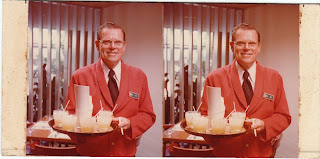
A Spanish/Mexican Hacienda made of Sunkist Oranges with an Asian Sign. What the? Since the publication in 1884, Helen Hunt Jackson's novel, "Ramona" has never been out of print. Ramona exposed the mistreatment of Mission Indians by Anglo-Americans. At the turn of the century, many "authentic" tourist traps claiming to be "Ramona's home" or "Ramona's Marriage Place" dotted Southern California. I suspect this is one, and dated 1924. It is still hard to walk a few miles in the state without finding a remaining vestige of Ramona, a woman who did not even exist. The citizens of Hemet, CA continue to perform a play based on the character, it is the longest running outdoor play in the country.
Real Photo Post Card dated 1924, mailed from Pasadena. Collection Jim Linderman


















































